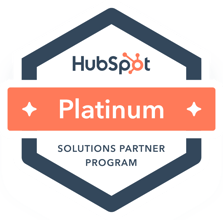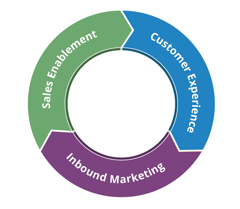1. It’s Not About Keyword Optimizations, but Quality Content
It’s imperative to understand that SEO is no longer solely about keyword optimizations or keyword stuffing. As Google’s ranking algorithms get more intelligent and sophisticated, you will be less likely to rank if your content is not relevant and high-quality.
No amount of “secret tactics” and optimizations can help low-quality, spammy content. You should think of SEO optimizations and tactics as ways to enhance the performance of already performing, high-quality content, and not the other way around. On the other hand, however, simply developing content is not enough.
It's important to remember that information is now moving at a swift pace. Your content might be outdated even after just a few months or weeks of publication. Knowing this, regularly updating your content with new or more relevant information is essential.
This will also help with the fact that millions of blog posts are published every day. When your content is updated with fresh information, you’ll have more chances for Google to notice it and might prioritize it to rank over competitors with outdated content.
Next, remember that developing high-quality content is just the starting point. How you promote the content via various channels is just as critical. No matter how good your content is, it won’t bring any value unless people consume it and, preferably, link to it. It’s crucial to understand that your content quality is the most essential secret to your SEO success, and there’s no shortcut to it. It’s probably the most straightforward SEO technique to understand but can be the most difficult to execute.
2. Utilize Free and Affordable Tools to Help Keyword Research
It’s no secret that SEO is very data-dependent, and the more data and metrics you can monitor and analyze, the better your chance to achieve success.
That said, the more data you can collect and analyze, the higher your chance of SEO success. Fortunately, various SEO tools are available to help us in various aspects, from keyword research to competitive analysis to content creation. For keyword research, for example, there are free tools like UberSuggest and Google’s Keyword Planner. Various accessible and affordable backlink analysis tools might suit your current SEO objective.
3. Target Long-Tail Keywords to Enhance Short-Tail Keywords
Short-term keywords are more popular since people are more likely to use them (and they might include them in longer queries). However, the competition for these keywords can be extremely tough. Long-tail keywords are more specific, so naturally, fewer people will search for them. However, competition tends to be more manageable, and it's likely more of your target audience since it's more specified.
However, Google and other search engines are getting better at understanding the context of long-tail keywords and the context between different content pieces on a website. The recent introduction of the Google BERT algorithm has enabled Google to understand long-term queries better and display more relevant results on the SERP.
So, you can now target and optimize for long-tail keywords to support your site’s SEO performance for the real target: the short-tail keywords. For instance:
- Targeting long-tail keywords as a secondary priority within the same content. For example, the main target keyword is “SEO strategy,” we can also target long-tail queries like “how to create SEO strategy” within one content piece.
- Create one content asset to target the main short-tail keyword, and then support content assets without that piece to target a long-tail keyword linked to the main content. For example, the main content can target “digital marketing” while discussing SEO. In contrast, the support content can target “how to create SEO strategy” linked to and from the main content.
4. Don’t Focus on Vanity Metrics
It’s no secret that SEO is a long-term game and, at the same time, a very data-driven field. So, the better you can monitor your progress via all the different metrics, the more you can improve your site’s optimizations to achieve results. However, knowing which metrics to monitor is even more critical since monitoring misleading, non-actionable data can be non-beneficial and harmful to your SEO efforts. These are vanity metrics, data that might look good on paper but don’t mean anything to your overall SEO performance or your site’s overall health.
The most common SEO vanity metric is SERP ranking. It’s essential to remember that ranking high on Google and other search engines is not the end objective of your SEO. Instead, website traffic and other objectives might be produced by getting more traffic: generated leads, newsletter sign-ups, sales revenue, etc.
Focus on evaluating metrics of which you can take action to improve them. This doesn’t necessarily mean you shouldn’t monitor these vanity metrics, as you can use them to motivate you and your team. However, know that more often than not, they don’t mean anything valuable unless it's driving actionable lead generation and revenue results.
5. Proper Competitive Analysis Is Key
SEO is, by nature, a competition where you want to rank higher than your competitor in the SERP. On the other hand, knowing your competitors is essential to beating them. The first step of proper SEO competitive analysis is your keyword research. Unless you’ve defined your target keywords, you can’t define your competitors for those keywords.
After properly defining your target keywords, the easiest thing to do here is to Google the target keywords and look at the top websites for these keywords. Alternatively, you can use various keyword research tools (including the free ones discussed above) to check this.
If you can, check and analyze all the sites on the first page of your SERP, but at the very least, you should analyze the top 3 pages. Your job is to create better content than these top-ranking websites or to take a different angle and create something unique to cover the keyword.
6. Optimize Your Content With On-Page SEO
You have now established that content is not only king (or queen) but everything in SEO. However, that’s not to say that on-page SEO optimizations are unnecessary. Still, the best way to approach them is to think that on-page SEO is crucial to support the content’s performance.
How should you optimize content for SEO? Contrary to popular belief, the best approach is not to optimize your content for the search engine’s algorithm but to optimize your content for the human audience. The longer you can keep the website visitor in your site, the better. Although on-page content optimization can be a pretty broad subject with a lot of different aspects to optimize, here are some key areas to consider:
- Keywords: This is fairly obvious, but include your target keywords naturally and sparingly, and focus on optimizing readability and user experience
- URL: Optimize your URL to include the target keywords, but ensure it’s short and comprehensive for human readers.
- META Description: This will be the “preview” displayed for the searchers on your SERP. Ensure it’s interesting for the human audience while including your target keywords.
- Headline/Title: A more interesting title will translate to more clicks. Use your target keyword naturally. If you can put the target keyword up-front, the better.
7. Create a Content Calendar
Yes, the quality of your content is very important for your site’s SEO performance. However, how often you publish the content while maintaining its quality is also extremely important so Google (and the other search engines) can adequately understand that your site is indeed relevant to the topic.
If you are starting, you can plan something like publishing content once per week and go from there. However, ideally, you should plan a 6-month content calendar (or, if you can, a year’s worth) consisting of what, when, and where (channel of publication) to publish the content. The more details you can put on your content calendar, the easier you can execute your content marketing and SEO.
While SEO will be more challenging, achieving great results is still very doable as long as you follow a defined plan and don't lose sight of creating quality content. Maintaining consistency throughout the SEO campaign is crucial: publish content around your core strategy, evaluate your progress, and re-optimize when necessary.
If you want to see how your website's SEO results compare to your competition, you can also get your free SEO report card.


.png?width=80&height=80&name=diamond-badge-color%20(1).png)
__Square.png?width=250&height=250&name=Marketing_Hub_(1)__Square.png)




.png?width=250&name=diamond-badge-color%20(1).png)
